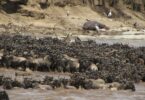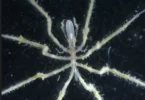In the heart of Africa’s savannas, where the golden grasslands stretch as far as the eye can see, resides the majestic lion (Panthera leo). Often hailed as the “king of the jungle,” the lion’s regal presence is matched by a complex social structure that reveals the depth of their behavior and relationships. Understanding the dynamics between lions and lionesses offers us a glimpse into their fascinating world, filled with strength, cooperation, and emotional bonds.
The Social Structure of Pride Life
Lions are unique among big cats for their social nature. They live in groups known as prides, which typically consist of a few related lionesses, their cubs, and one or two dominant males. This social structure is crucial for their survival in the wild, as it provides protection and increases hunting success.
Lionesses are the primary hunters of the pride, working together to stalk and ambush prey. Their cooperative hunting strategies are a testament to their intelligence and teamwork, often resulting in successful captures of large animals like zebras and wildebeests. The strong bonds among lionesses are evident as they groom and play with each other, reinforcing their social ties.
The Role of the Lion
The role of the male lion is equally important, though distinct from that of the females. Typically larger and more powerful, male lions guard the pride’s territory, protecting it from rival males and potential threats. Their deep roars can be heard from miles away, signaling their presence and asserting dominance.
While they may not participate directly in hunting, male lions play a critical role in the pride’s hierarchy. When it comes to mating, a dominant male will mate with multiple lionesses, ensuring the continuation of his lineage. However, this comes with challenges, as new males may attempt to take over a pride, leading to fierce battles and the potential loss of cubs if they succeed.
Maternal Instincts and Cub Care
Lionesses are fiercely devoted mothers, displaying remarkable maternal instincts. After a gestation period of about 110 days, a lioness typically gives birth to a litter of one to four cubs. The cubs are born blind and rely entirely on their mother for nourishment and protection.
In the first few weeks of life, lionesses often keep their cubs hidden to safeguard them from predators. As the cubs grow, they begin to explore their surroundings and learn essential survival skills. The pride’s social structure provides additional protection, as lionesses often nurse and care for each other’s cubs, creating a strong communal bond.
Communication: The Language of Lions
Lions have a rich repertoire of vocalizations, body language, and facial expressions that facilitate communication within the pride. Roaring serves multiple purposes: it marks territory, strengthens social bonds, and reassures pride members of each other’s presence.
Subtle gestures, such as nuzzling and grooming, reflect affection and reinforce relationships among pride members. This social communication is vital for maintaining harmony and cohesion, crucial for the pride’s overall success.
Conservation: A Call to Action
Despite their iconic status, lions face significant threats, including habitat loss, poaching, and human-wildlife conflict. Conservation efforts are critical to ensuring their survival in the wild. Organizations such as the African Wildlife Foundation work tirelessly to protect lion habitats and promote coexistence between humans and wildlife.
By supporting conservation initiatives and spreading awareness about the challenges lions face, we can play a part in securing a future for these magnificent creatures. Every action counts, whether it’s supporting wildlife reserves or advocating for policies that protect their habitats.
Conclusion
The lives of lions and lionesses are a fascinating blend of power, loyalty, and complex social dynamics. Their behaviors provide a glimpse into the intricate web of life in the African savanna. As we learn more about these majestic animals, we deepen our understanding of the natural world and our responsibility to protect it.








